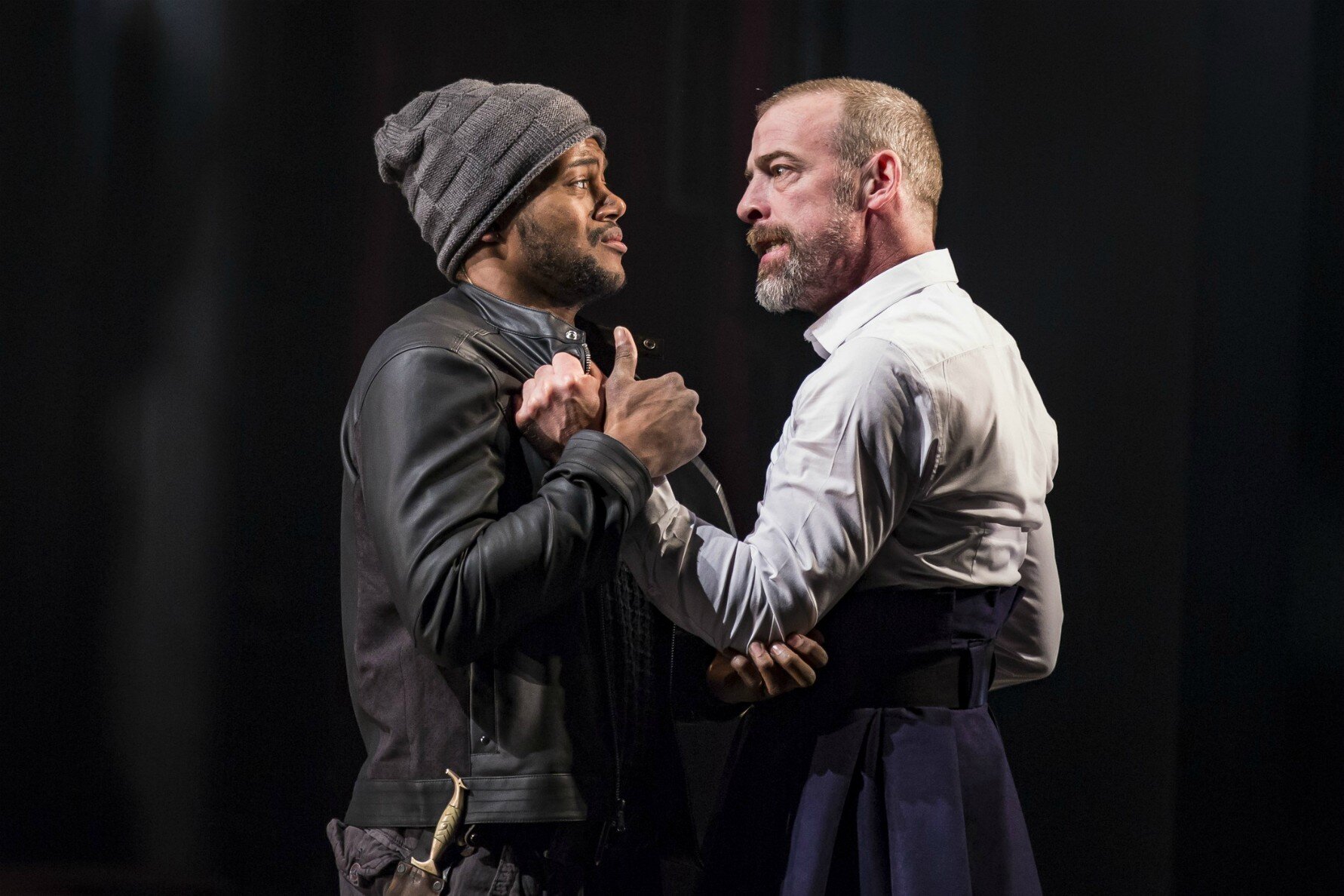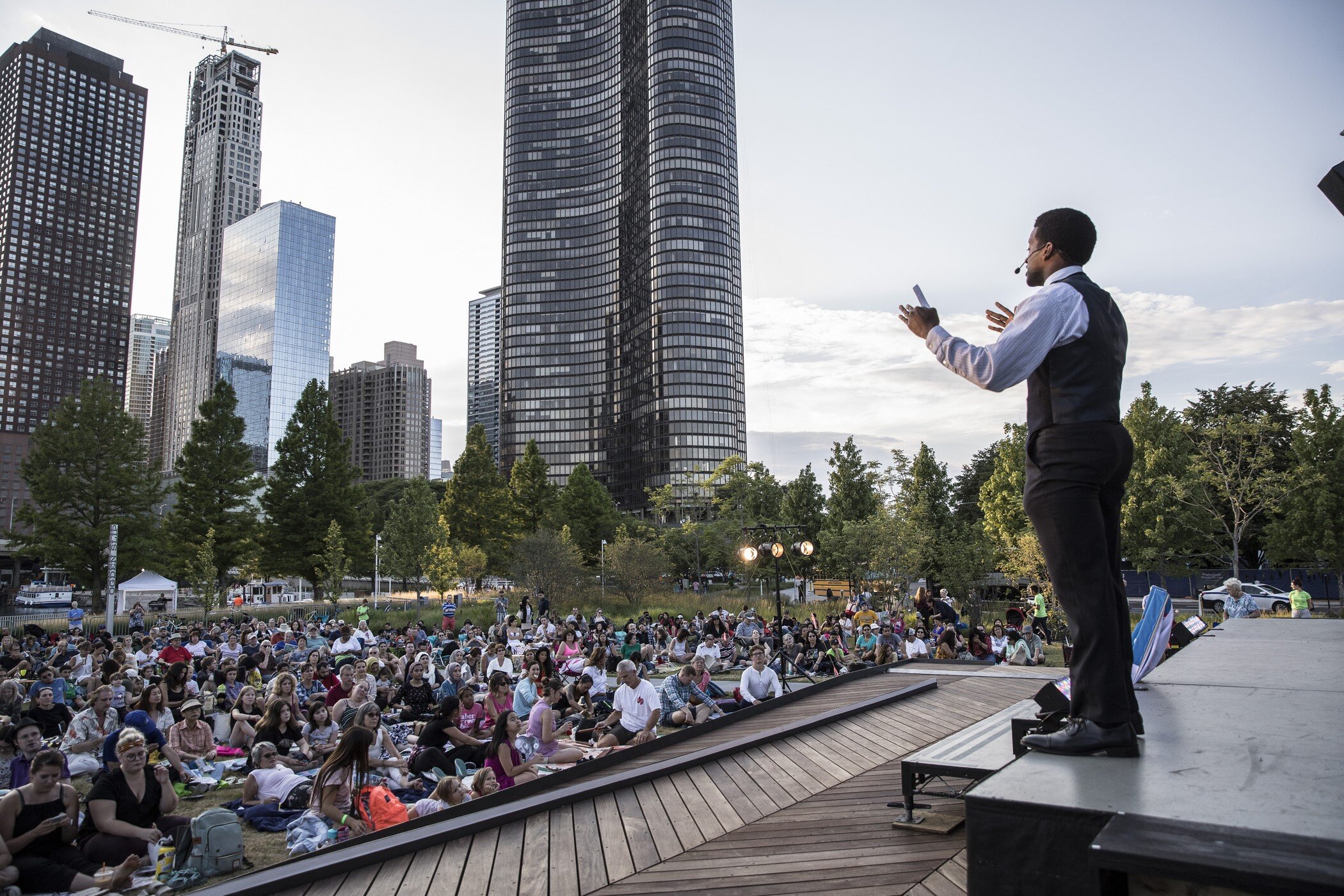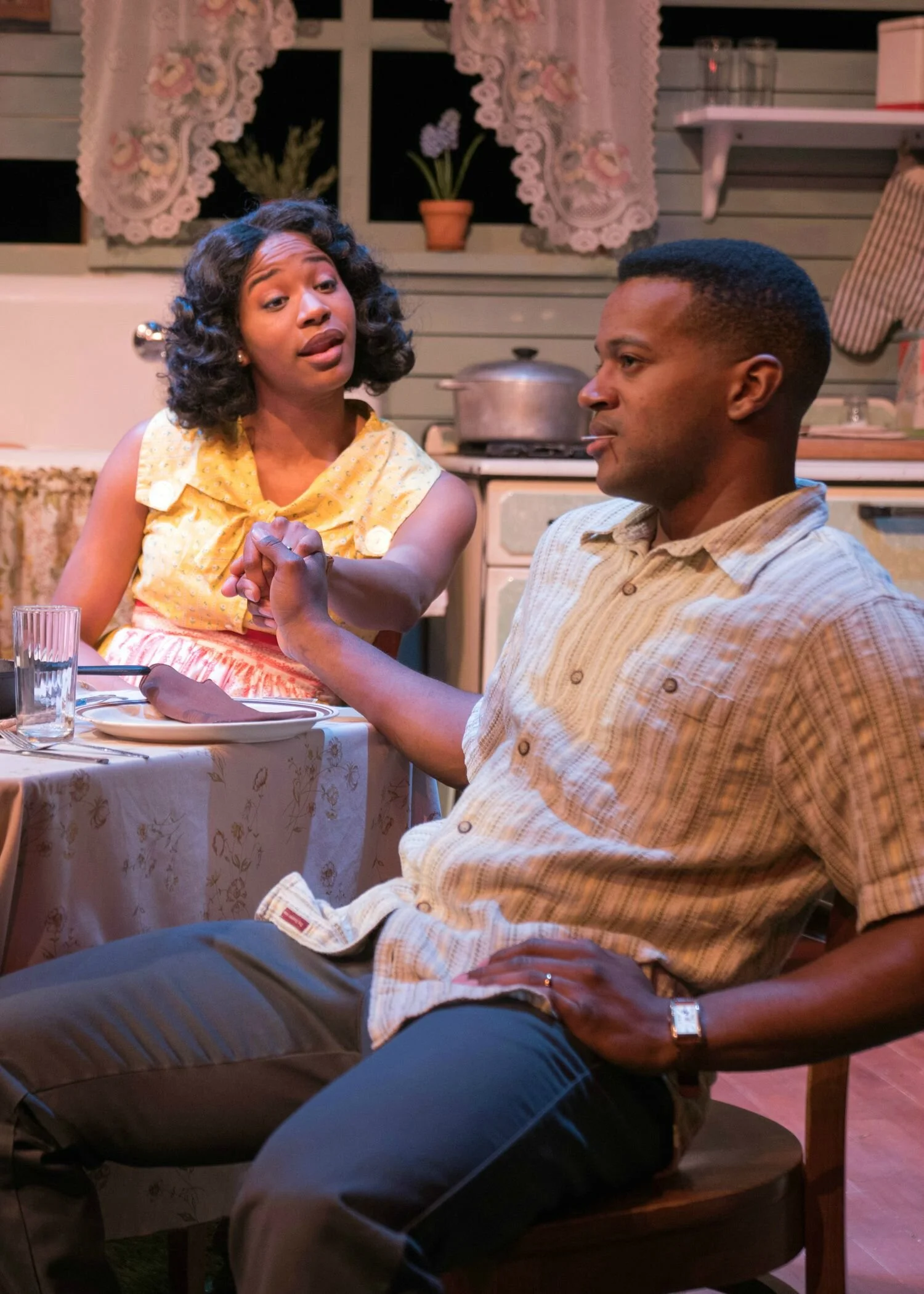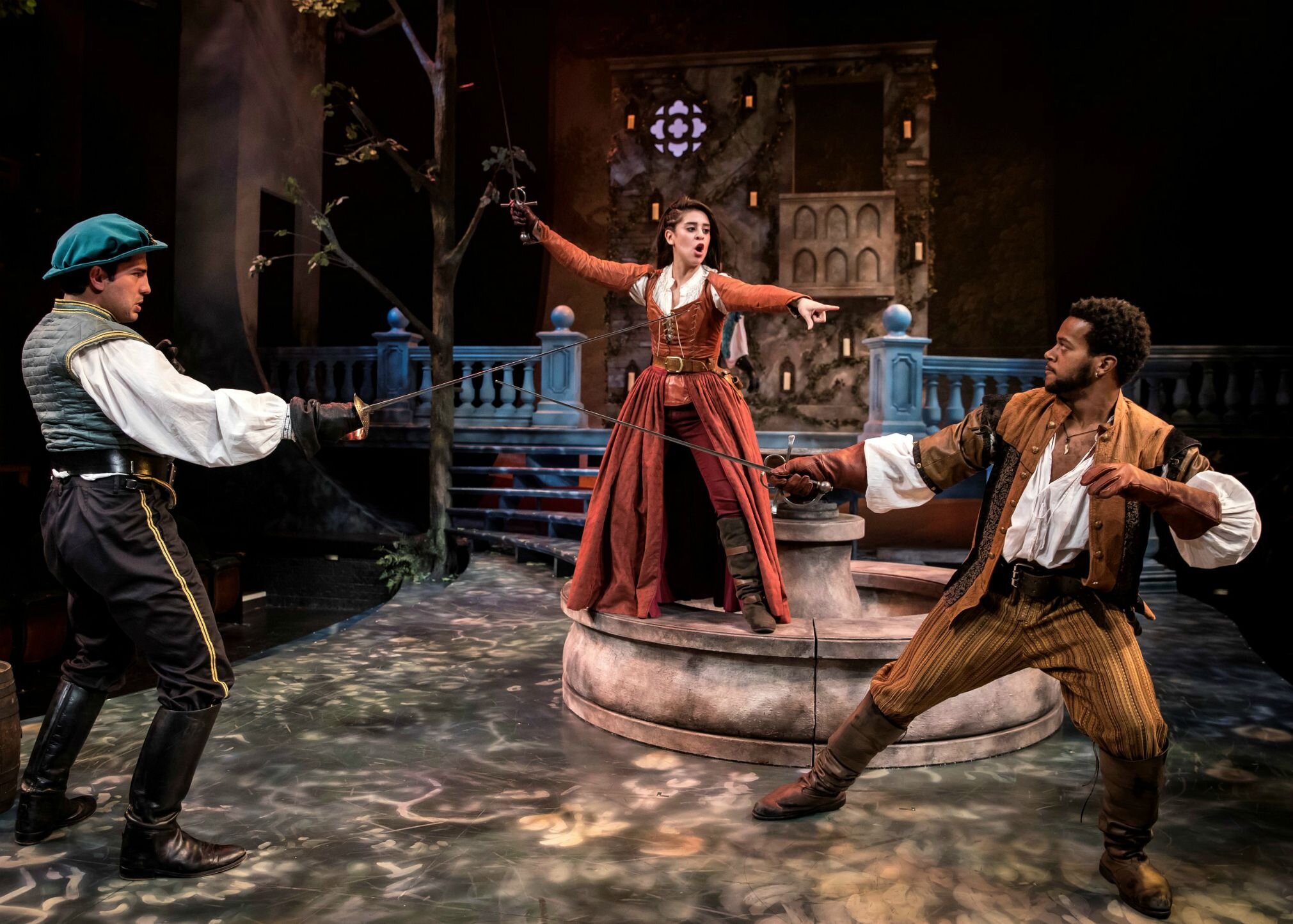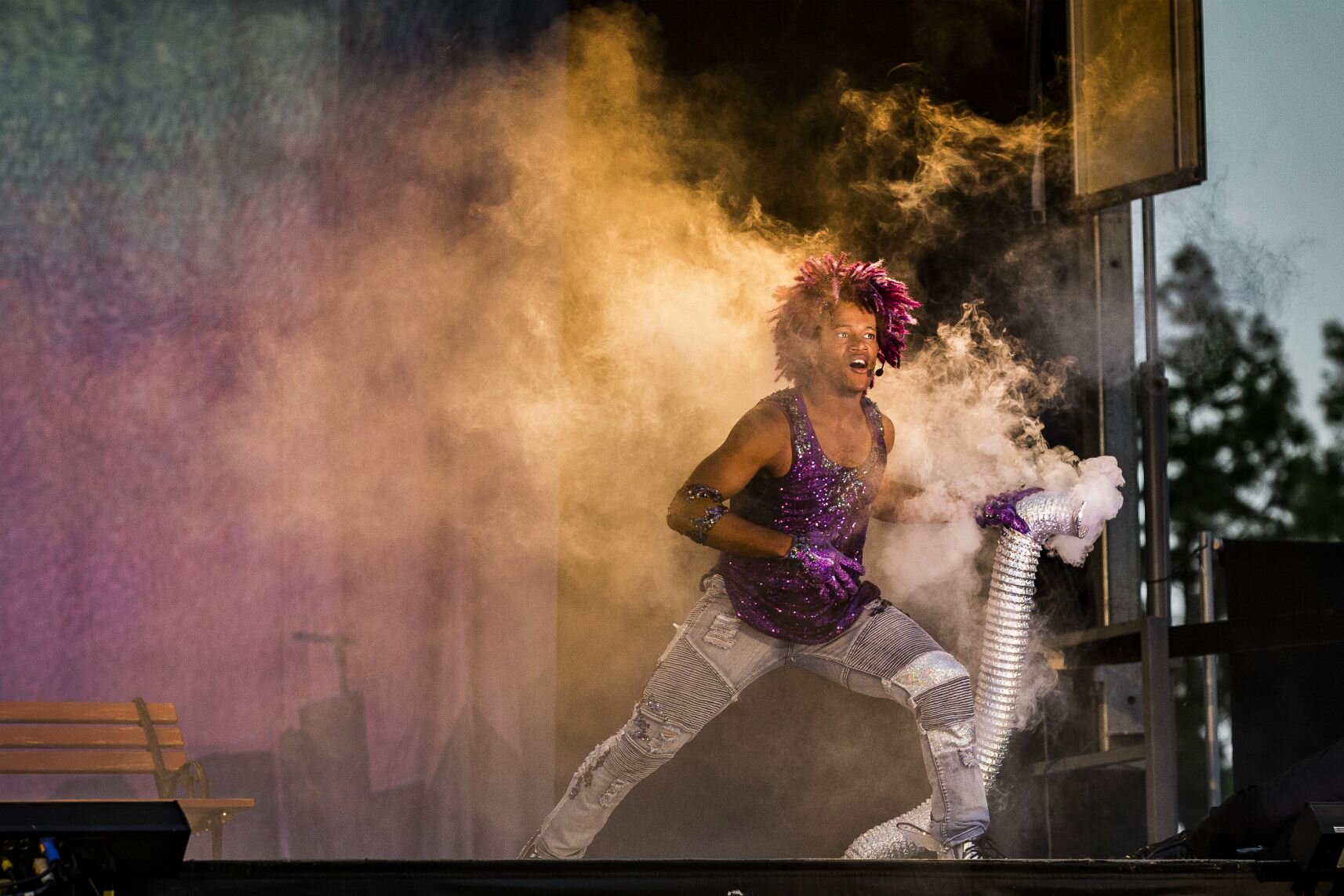CAGE SEBASTIAN PIERRE - Daggers Rule in 'Romeo and Juliet' at Chicago Shakespeare
Things have come full circle at Chicago Shakespeare Theater for Cage Sebastian Pierre. His first Chicago role was Balthazar in the 2017 Marti Lyons directed Romeo and Juliet at Shakes, a production in which he served as dance captain. It did not take long to realize that his fight training at the University of Minnesota/Guthrie Theater BFA Actor Training Program and certification from Dueling Arts International would be an asset to the production and others that have followed.
Which all of course leads naturally to the upcoming Barbara Gaines production of Romeo and Juliet, set in 2020 Verona, that begins previews on October 31st. Cage plays Benvolio and serves as the Associate Fight Choreographer to Fight Choreographer Rick Sordelet, arguably the top fight director in the business with over 70 Broadway credits and counting. In this creative capacity, Pierre works alongside Sordelet in the staging process and is the show’s Fight Captain, responsible for maintaining the safety and blocking of the stage violence throughout the run.
When we caught up with him during a break in rehearsal, the engaging Pierre addressed the challenges of staging fights with daggers versus rapiers for this production, the creative and rehearsal process that requires every move in a fight to tell a meaningful story and the process that is followed in advance of every performance.
Earlier this year, the multi-talented actor played Tony Carter in the brilliant TimeLine production of Too Heavy For Your Pocket directed by Ron OJ Parson, a show about the enormous courage and sacrifice by Freedom Rider activists in the early 1960s that Pierre says changed his life. He appeared in the Chicago Shakespeare production of Macbeth, the Chicago Shakespeare in the Parks production of A Midsummer Night’s Dream, has been in the company of Q Brothers Christmas Carol for two seasons and appeared on television in Empire.
There is much more ahead in our thoughtful CONVERSATION with one of Chicago’s top young actors and fight choreographers, Cage Sebastian Pierre. PODCAST
Early influencers… “If I had to pick someone who was instrumental into my learning, I'd probably say Marcela Lorca. She has this technique that she created called ‘Lorca Movement’ that really connects body to text because Shakespeare can get insanely heady if you let it. So, her grounding it back in lived experience helped connect the bridge between language, the body and to create the product of story. … And then the most pivotal person who I will add to the ‘Marcela Lorca’ list is Annie Enneking. She was my fight choreographer teacher. She taught us all about fight choreography. She pulled me to the side and said, ‘Hey, you are really special at this. I would like to train you, get you certified and send you to get more training at a different program.’ She lifted me up in that way and from there I've just sort of been running with it.”
Fight choreography certification… “I got certified originally under Dueling Arts International (DAI) in unarmed, which is essentially hand-to-hand, broad sword and rapier, and contemporary violence, specifically in the unarmed section. So that covers a lot of Shakespeare, realism, (and) a lot of your more classical plays.”
Contemporary violence?… “that has to do deal with found objects because so much of contemporary violence happens in domestic settings or workplace settings. If someone needs to be thrown onto a table, and then hit with the phone, then we have to take the time to talk. What is this object? Does it need to be fake? Can we hide it? Where do we find the noise or what we call a ‘knap,’ the sound that we hear when someone is being hit. Is this object dangerous? …contemporary violence is using found objects in our current century to tell that story.”
Following the text… “the dream is always that as soon as we touch these weapons in Shakespeare, everything we do comes strictly from the text. Romeo and Juliet has a prime example. We hear all this language about how Tybalt is a measured fighter. So he is not a person waving a blade. He is not a person who taught himself. He has been to school for it. He has a form and a technique. Whereas Mercutio we hear likes to fight for days and days and his language lends us to believe that maybe Mercutio is a bit more of a free-form fighter. If I am looking at the fight between the two, I take every single movement I can off the language. If he says, ‘Will you walk?’ then we might not necessarily be walking, but that might be an indication of an en garde or an indication of a blade being drawn…. once we understand this story, and we find every single point of indication, we then go back over that indicated timeline and fill in those moments with justified action. Then from there we do everything at the slowest speed possible so that people know exactly where my point is going. The intention of this. Am I evading or am I attacking? So on and so forth, until we slowly work that up to speed. We add vocals. We add blood.”
Fight Captain responsibilities… “Making sure everybody is safe. Everybody is keeping the integrity of the fight and that the story is still being upheld. Every day, half hour to an hour, depending on how many fights and the intricacy of those fights, we do everything once at a very, very slow pace that we call ‘mudspeed.’ And then we do the whole thing again at the speed it will be for the show. So, every time you see a show, and if there are two shows in a day, we ran that fight two times before you see it.”
Romeo and Juliet. …“What I think that this production is trying to challenge or what my personal goal in this production to challenge is that the opposite of love is not hate. That they actually only exist in tandem and that one is necessary for the other. But how we go about manifesting those things I think is the question. And to challenge that the opposite of hate is not love, but in fact, creation. I won't ruin the ending for those who want to come see it, but in our production we challenge the ending of this play and really ask the question, ‘What are we truly creating?’ We can create a facade. We can create an image. We can create, let's say, a monument—an ode—to our past mistakes. But what is creating that breed for our future? I think this production calls for the creation of action in a very immediate way, not that all theatre is immediate and not all issues are immediate, but I think this production holds true to that. I think this production asks us, ‘What hate are we holding on to in spite of creation? When there is an opportunity to create something, say a bond, an opportunity for peace or collaboration, how are we negating that by clinging on to our hate?’”
The Future… “Fight choreography is something I enjoy. Telling stories through movement and allowing people to excise violence in a way that hopefully suppresses it in the real world—excise it on stage to suppress it in the real world. As far as what I see for myself, I am interested in pursuing more film and television, but I am also interested in devising work because the more choreography I do, the more I realize that I work at a lot of places where the connection from language to body is not as strong. And I would like to build a work where those two things do not exist without each other and to question and challenge traditional storytelling. So, we'll see. We'll see how that manifests in the next few years.” PODCAST
Comments have been edited for length and clarity.
CST PHOTOS | Liz Lauren
TimeLine PHOTO | Lara Goetsch
CHICAGO SHAKESPEARE THEATER
presents
ROMEO AND JULIET
Courtyard Theater
Navy Pier
through December 22, 2019
WEBSITE
TICKETS
(312) 595-5600
PODCAST available on Apple Podcasts, Libsyn, Stitcher, IHeartRadio and Radio.com App
ARCHIVE DE USURIS BLOG EMAIL WEBSITE SUBSCRIBE

